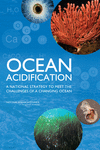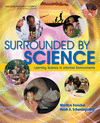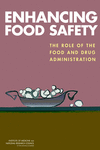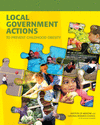Got scientists and engineers on your holiday shopping list? Take five and check out our top gift ideas. NAP books and merchandise make thoughtful gifts for thinking people.
|
Climate change is occurring. It is very likely caused by the emission of greenhouse gases from human activities, and poses significant risks for a range of human and natural systems. And these emissions continue to increase, which will result in further… |
|
|
Climate Stabilization Targets: Emissions, Concentrations, and Impacts over Decades to Millennia Emissions of carbon dioxide from the burning of fossil fuels have ushered in a new epoch where human activities will largely determine the evolution of Earth’s climate. Because carbon dioxide in the atmosphere is long lived, it can effectively lock the Earth… |
|
|
Ocean Acidification: A National Strategy to Meet the Challenges of a Changing Ocean The ocean has absorbed a significant portion of all human-made carbon dioxide emissions. This benefits human society by moderating the rate of climate change, but also causes unprecedented changes to ocean chemistry. Carbon dioxide taken up by the ocean… |
|
|
Understanding Earth’s Deep Past: Lessons for Our Climate Future There is little dispute within the scientific community that humans are changing Earth’s climate on a decadal to century time-scale. By the end of this century, without a reduction in emissions, atmospheric CO2 is projected to increase to levels that Earth… |
|
|
Understanding Climate’s Influence on Human Evolution The hominin fossil record documents a history of critical evolutionary events that have ultimately shaped and defined what it means to be human, including the origins of bipedalism; the emergence of our genus Homo; the first use of stone tools; increases in… |











































